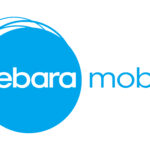
In today’s digital landscape, the speed and reliability of content delivery play a pivotal role in shaping user experiences and, consequently, the success of online businesses. Content Delivery Networks (CDNs) have evolved significantly over the years, adapting to the ever-growing demands of the internet. In this comprehensive guide, we will delve deep into the latest trends and innovations in CDN hosting, shedding light on how these technologies are revolutionizing the way content is delivered to users around the world.
Understanding the CDN Landscape
A Historical Overview
To grasp the significance of CDN evolution, let’s rewind the clock. CDNs emerged as a response to the growing internet traffic and the need to reduce latency. Companies started setting up server nodes in strategic locations to cache and deliver content closer to the end-users. It was a game-changer.
The Core Function of CDNs
A CDN’s primary function is to optimize the delivery of web content. It does this by serving cached content from the nearest edge server to the user, minimizing latency and enhancing overall performance.
The Latest Innovations
Edge Computing Integration
CDNs are no longer just about content delivery. They’ve evolved to become powerful platforms for edge computing. With server resources deployed at the edge, CDNs enable real-time processing, reducing the round-trip to origin servers. This is particularly crucial for applications like IoT and AR/VR.
Secure Socket Layer (SSL) and Content Encryption
The importance of data security cannot be overstated. Modern CDNs are equipped with robust SSL encryption, ensuring that data is transmitted securely. Additionally, they offer advanced encryption options to meet the most stringent security requirements.
HTTP/2 and QUIC Protocols
Newer CDN services are harnessing the power of HTTP/2 and QUIC (Quick UDP Internet Connections) protocols. These protocols minimize latency and enhance web page load times, resulting in a smoother user experience.
Video Streaming and 4K Content
As the demand for high-quality video content continues to rise, CDNs have adapted to support smooth video streaming, including 4K content delivery. This ensures buffer-free playback, even during peak demand.
Enhancing User Experiences
Global Server Networks
Leading CDN providers boast extensive server networks spanning the globe. This widespread presence ensures that users from different parts of the world experience minimal latency, fast-loading web pages, and quick content downloads.
Mobile Optimization
The mobile-friendliness of CDNs is paramount in today’s mobile-centric world. CDNs have adapted to deliver optimized content for mobile devices, further improving user experiences on smartphones and tablets.
Caching Dynamic Content
Traditionally, CDNs were designed for caching static content. However, modern CDNs are now capable of caching dynamic content, including personalized content, making them more versatile than ever.
Final Words
In this fast-evolving digital landscape, CDNs have evolved into sophisticated platforms that do much more than content delivery. They have become integral to ensuring optimal user experiences, enhancing security, and enabling edge computing. Embracing these latest trends and innovations in CDN hosting can give your online presence a significant edge.
Commonly Asked Questions
Q1: What is the significance of edge computing in CDNs?
Edge computing in CDNs brings server resources closer to the end-users, enabling real-time processing and reducing latency. This is especially vital for applications like IoT and AR/VR.
Q2: How do CDNs enhance data security?
CDNs use robust SSL encryption and advanced encryption options to secure data during transmission, ensuring user privacy and data protection.
Q3: What are HTTP/2 and QUIC protocols, and how do they benefit CDN performance?
HTTP/2 and QUIC are advanced protocols that minimize latency and enhance web page load times, resulting in a smoother user experience when accessing web content.
Q4: How do CDNs optimize mobile content delivery?
CDNs are optimized for mobile devices, ensuring fast-loading web pages and quick content downloads on smartphones and tablets.
Q5: Can CDNs cache dynamic content, and why is it important?
Modern CDNs are capable of caching dynamic content, including personalized content, making them more versatile and able to provide a better user experience for dynamic web applications.
Advertisement







